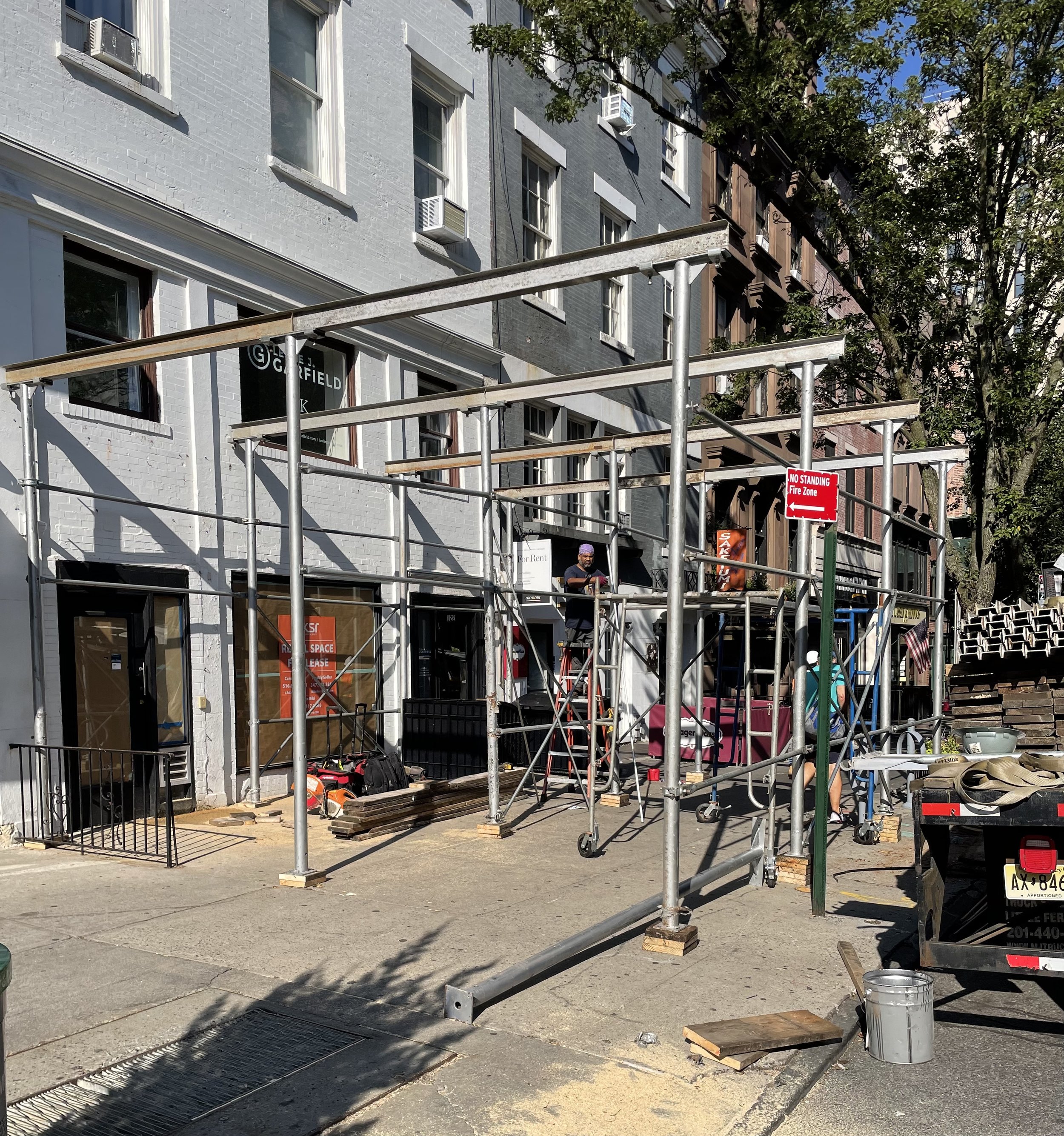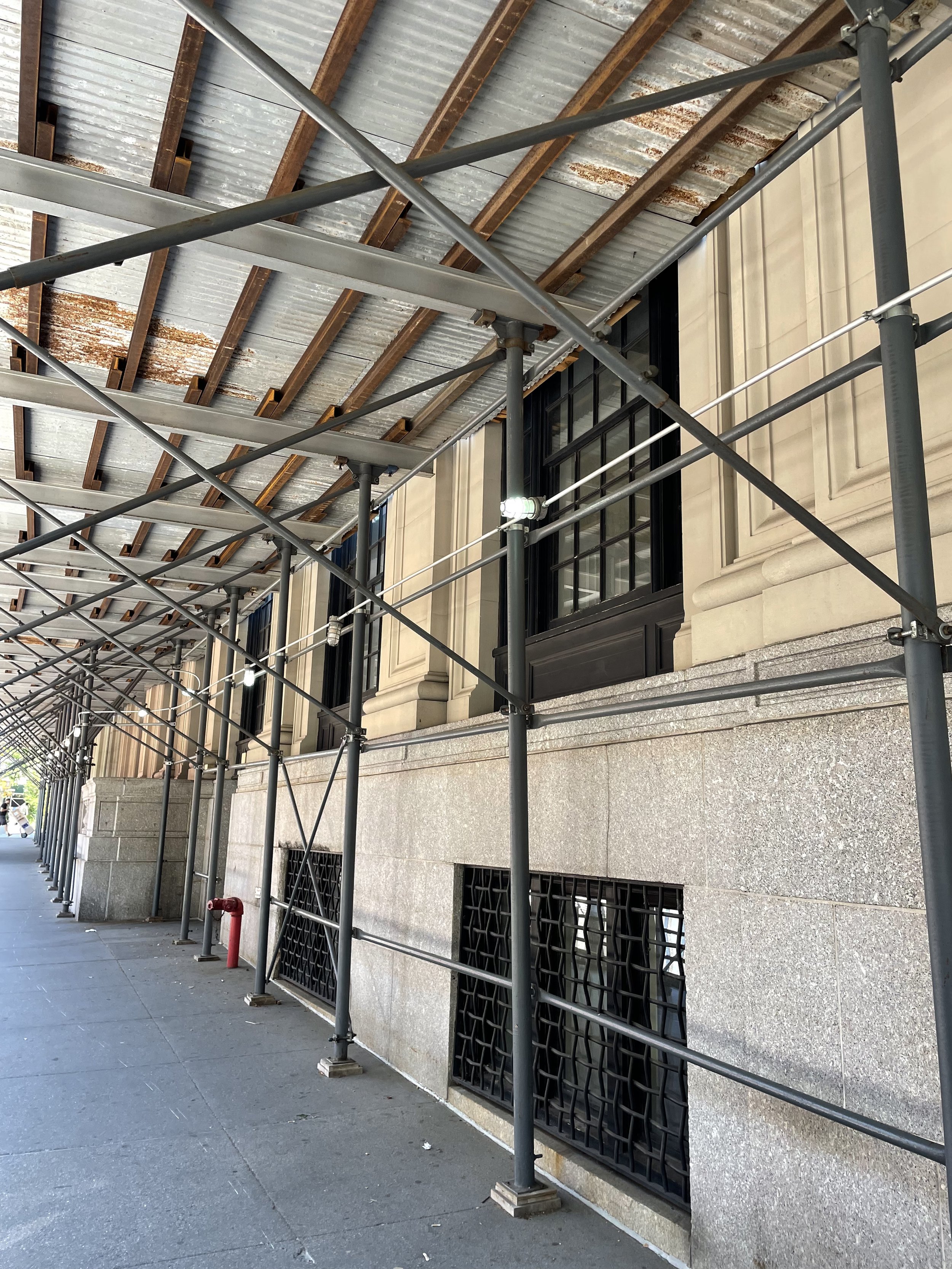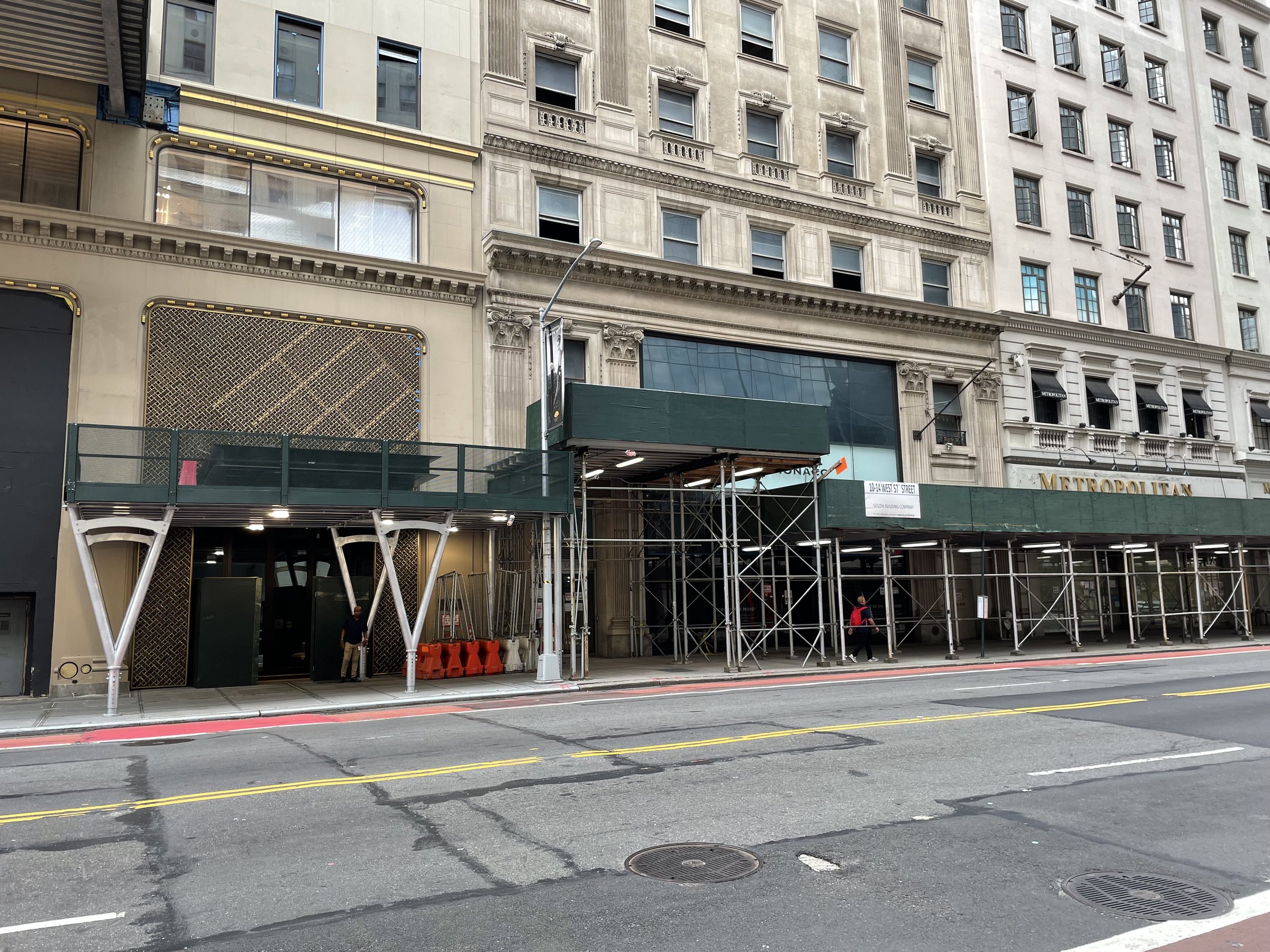Originally published on Tawk of New Yawk
On the north side of Montague Street in Brooklyn Heights, between Hicks and Henry, there’s a pristine span of bright, airy, completely un-scaffolded sidewalk. Walking down this untainted footpath when the sun is out fills me with an overwhelming jauntiness, as if I’ve been spirited away to Barcelona or Monte Carlo. Walking down the south side of the street, on the other hand, can evoke in me a deep sense of dread and anxiety, like I’m a down-on-his-luck extra in Blade Runner. On this side of the street, with all its potential as a beautiful public space, steel pipes meet harsh fluorescent lights and dank green wood in an unsettling melange that obstructs the sidewalk and, quite frankly, ruins my day.
I hate scaffolding. So much.
To be precise, most of the structures that incessantly crop up throughout New York City are not scaffolding but sidewalk sheds. That they’ve foisted these unforgivably ugly and dehumanizing structures on us for decades without changing the design is bad enough; but for them to also name them “sidewalk sheds”? That’s just dispiriting.
A sidewalk shed on Montague Street that was built literally while I wrote this
The proliferation of sidewalk sheds is partly a result of Local Law 11, which requires buildings over six stories to be inspected every five years to ensure crumbling masonry doesn’t rain down on us as we’re exiting Starbucks. Many building owners, however, are content to let these eyesores monopolize our walkways as they casually go about fixing any problem that gets cited. In fact, in many cases it’s cheaper for them to let the sheds stay there until the next inspection.
I know they’re a necessary evil, but in their current form, these sheds are such a pain. First off, they’re often a hazard on their own, having collapsed and/or fallen apart on numerous occasions over the years. (It’s almost as if the answer to the question How do we keep objects from falling on our heads? isn’t always Let’s put more objects immediately above our heads.) They’re also a navigational nightmare. Passing slow pedestrians under scaffolding is like being unwittingly thrust into a parkour competition. Most importantly, though, they obstruct countless façades, and they fragment New York’s architecture to the point that scaffolding has become the city’s most cohesive architectural element.
Look closely and you’ll see spectacularly detailed lion heads in the façade of the old Bossert Hotel
Not so much anymore
So, walking on an un-scaffolded sidewalk is something of an unattainable luxury in New York. But if you can’t eliminate it, why not put regulations and incentives in place that would ensure the scaffolding is at least more pleasant to look at and walk through? If we can beautify these structures, why wouldn’t we? New York has so many aesthetic issues that don’t really have a solution: trash, dog waste, Penn Station, the creepy AT&T building in Tribeca. But sidewalk sheds can and should be better, as evidenced by the innovative solutions that have already been installed in some parts of the city.
As a result of the city’s 2009 urbanSHED competition, a new design was rolled out, the Urban Umbrella. It features sleek supports, stylish LED light installations, and a sheer parapet that’s considerably more attractive than the hunter green plywood that has become ensconced in too many buildings over the years. The company stalled for a while, but after over a decade, the Urban Umbrella has started to catch on. You’ve probably seen their sheds in front of the swankier establishments in town.
There are, of course, plenty of other solutions to the Scaffolding Problem. Carnegie Hall’s shed has red- painted supports, with a designy parapet and renderings of the building’s façade stretched out across the scaffolding’s safety netting. In 2015, Zaha Hadid designed a gorgeous canopy resembling a curling wave that spanned part of the High Line and protected park-goers from construction. There are also minimalist designs that incorporate the exact same materials we use now but without the crossbeams, which are what tend to make the scaffolding look like a scary, mangled adult jungle gym. One of the absolute best options I’ve seen is the cantilevered canopy, which completely eliminates the need for supports that would obstruct the sidewalk.
Carnegie Hall – A simple solution that makes a substantial difference
A slightly more elegant, minimalist shed next to the design we’ve been stuck with for 40 years
The best-case scenario, on 57th and 5th Avenue
At the moment, there are no mandates that would lead to more appealing, less anxiety-inducing sidewalk sheds. Is the scaffold lobby really so powerful? Do we really have to walk through a claustrophobia- inducing morass of aluminum and leaky plywood just so that a building owner can renovate their luxury high-rise? Surely not.
Yes, fancy scaffolding like the Urban Umbrella has become a bit of a status symbol, and its sheds are primarily adorned with names like Ralph Lauren, The Yale Club, and Louis Vuitton. No, I don’t expect every landlord to provide prohibitively expensive, chic construction safety solutions. But I think we can build scaffolding that provides a simultaneously utilitarian, accessible, and enjoyable way for locals and tourists to meet the city on a daily basis; and for the sake of our public spaces—and my nervous system—I think we should.






